How to Diagnose EMC? (Part 02)
This article will mainly share the diagnosing techniques and case analysis of EMI.
1. How to determine the type of the noise?
(1). Conductive noise positioning
 Solutions vary with different types of the noise
Solutions vary with different types of the noise
As for conductive interference, the general experience within the industry is to take relative rectification measures after determining whether it is differential mode EMI or common mode EMI according to the frequency range that exceeds the limits. This classification, as a conclusion worked out in accordance with a large quantity of test data and rectification experience, has reference value in engineering analysis.
(2). Radiation noise positioning

Solutions vary with different types of the noise
The figure above is about radiation test, displaying different shapes of noise such as bun-like wave and spike pulse. We can generally determine whether it is the power supply or system frequency according to the test wave shapes. Different noise has different solutions, and the point is to find out the accurate interference source. Generally, the switching power supply noise is continuous when seen from the frequency spectrum, which is called bun-like wave or broadband noise. While the system frequency is isolated so that it is named spike pulse or narrowband spike.
And how to analyze where the noise emits? Let’s see the following analysis trilogy of EMI.
2. Analysis Trilogy of EMI
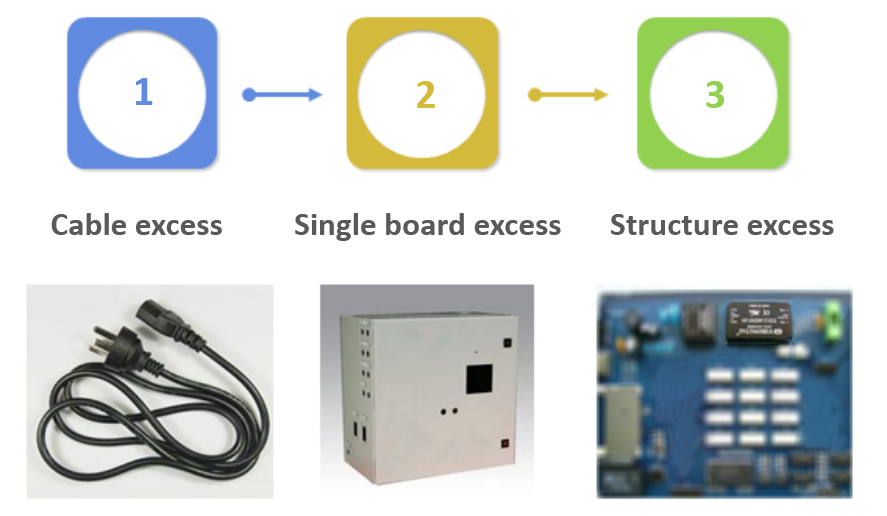
EMI excess is mainly caused by three parts above: cable, structure, and single board. And when faced with EMI problems, diagnosis would be processed in these three aspects. And then here are diagnosing techniques focusing on the three problems of excess. First let’s see the excess problem caused by cable.
(1). Cable excess positioning
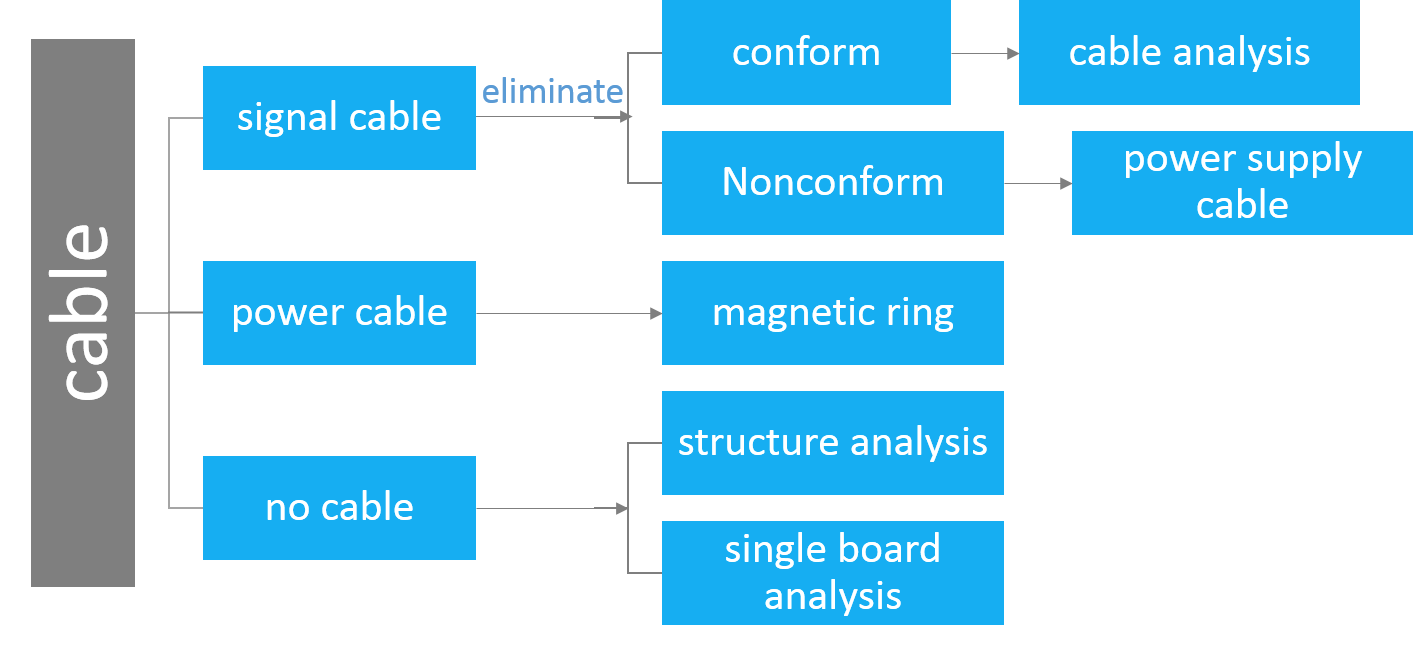
EMI, especially the radiation, mostly emits from the cable. And then you should determine all the kinds of the cable in the system such as signal cable, and power cable. With normal operation, it’s available to eliminate all the signal cables to check if there are still problems. If it turns out the test results in great variation or conformity after one of the cables is eliminated, it means this route has big interference, so that relative solutions can be taken.
If there is no change after all signal cables are eliminated, power cable should be checked. For power cable, a favorable diagnosing measure is to use magnetic ring directly coiling the wire to test in order to improve the effect. If it is improved, it’s greatly probable that the filter in the power end was not treated well. But if there is no effect, analysis of structure or single board is necessary.
(2). Structure excess positioning
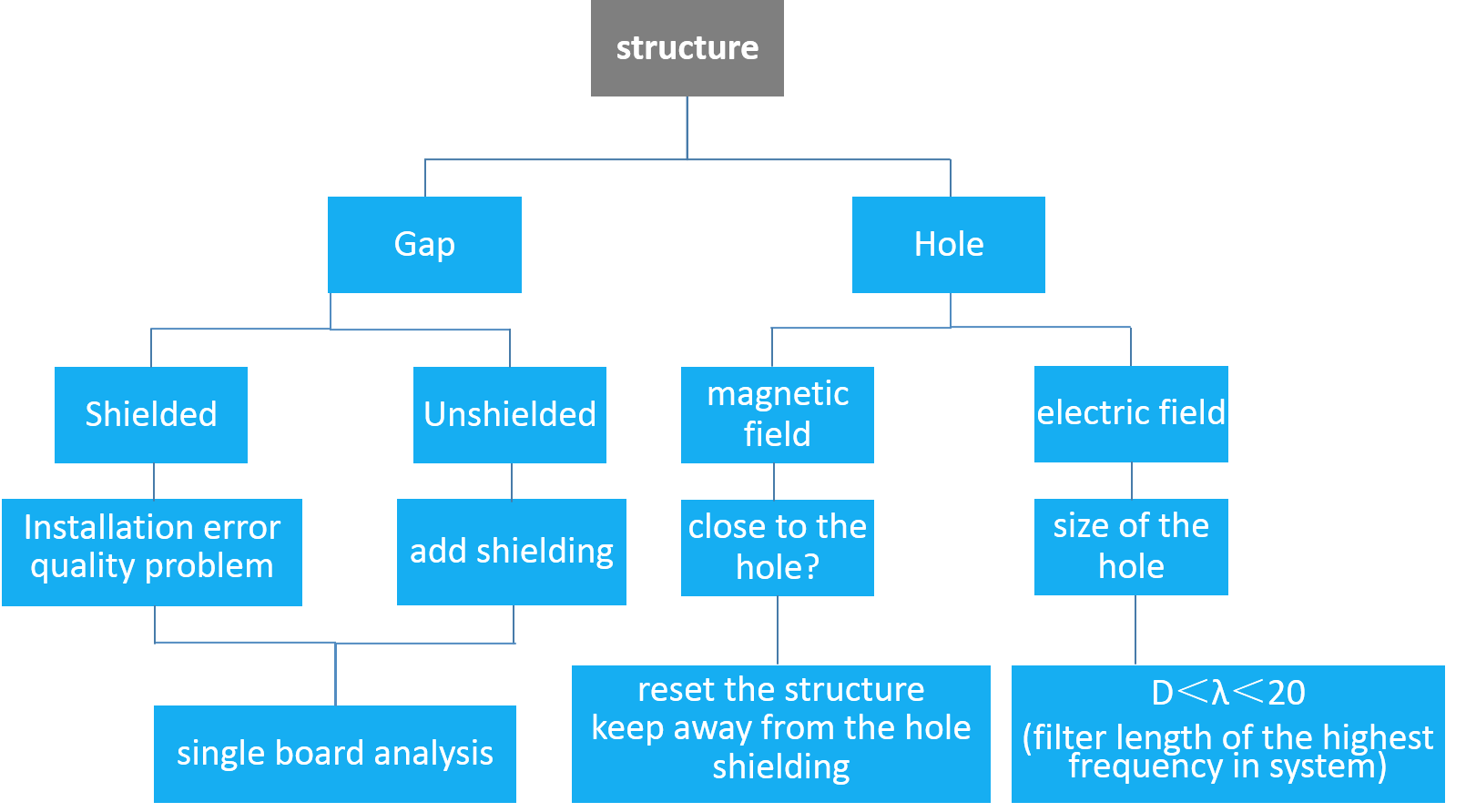
For structural problems, this is relatively few as a rectification measure, but there is no problem with positioning. The excess caused by the structure is mainly the gaps and holes in the metal shell, which can be detected using the spectrum analyzer introduced previously. If the gap is shielded, check the selection and installation of shielding materials. If they are not used, you can use conductive paper with shielding function to see if there is any improvement.
(3). Single board excess positioning
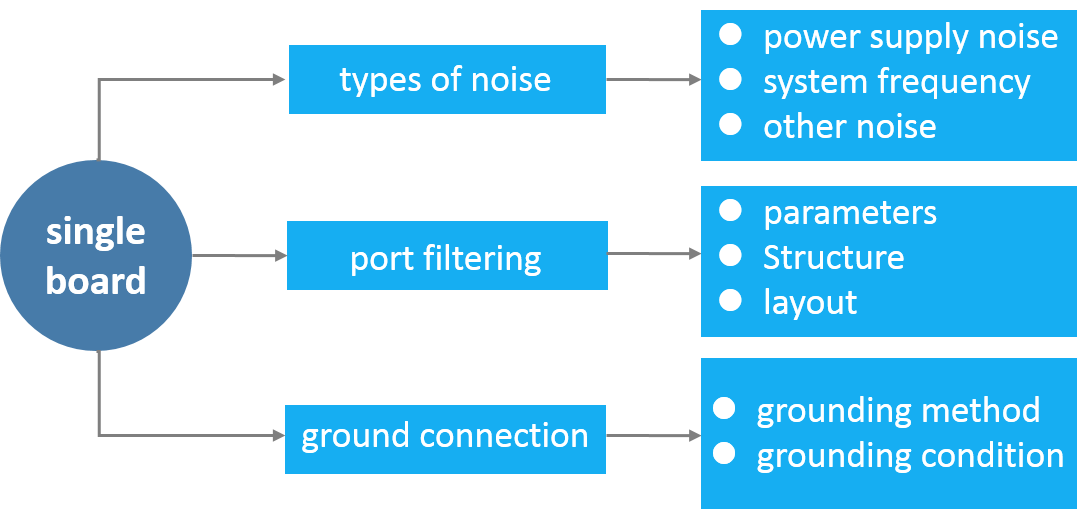
Single board, different from the two aspects above that are from the perspective of conducting ways, belongs to the true noise source. If the cable and structural problems are all eliminated, the board must be positioned to determine whether the board itself meets the requirements. The design must first ensure that the board meets the requirements. Test the board to determine whether the noise is power supply noise or system frequency. If it is power supply noise, the power supply should be processed. Generally, the power supply supplier has a corresponding solution for EMC. If not, you can consult the supplier. If it is the system frequency, the signals such as crystal oscillator and clock should be processed. If it cannot be solved, you can consider adding some additional filtering devices, shielding and other measures to improve.
If there is already a relatively complete filter circuit, but the actual filter effect is not good, it is usually necessary to consider whether the selection parameters, structure and layout of the filter device are reasonable, or whether it is reliably grounded, and the location of the ground point.
3. EMI case analysis
Case 1: inductance selection and match
 Bun-like wave: it is mainly power supply noise, starting from power supply filtering
Bun-like wave: it is mainly power supply noise, starting from power supply filtering
Case 1: as the figure shows, the excess appears during the radiation test. Through observing the test oscillogram, it can be roughly judged that it belongs to power supply noise. So first consider processing the power supply. According to the excess phenomenon and positioning ideas, all other wires except the power line were removed, and no major improvement was found. Then put a magnetic ring on the power line, the radiation decreased a lot, so it could be judged that the noise came from the power line.

Inductors with different inductances are used in series to increase the filter bandwidth
According to the investigation result, it’s effective to coil the magnetic ring on to verify the power supply noise, and non-signal cable radiation. Therefore, filtering needs to be done to power supply port. By observing the circuit board, you may find three problems need noticing:
1. Three power supplies in parallel cause crosstalk easily to enhance the noise;
2. Filter circuit of U-shape layout causes filter circuit failure easily;
3. The effect of the high frequency suppression “UU” shape common mode inductance is little.
Considering that using magnetic ring can improve the filter effect, it can be roughly determined that: to improve the filter circuit parameters, it can use a common mode inductance, which can achieve some improvement, but causes increase of other frequencies. In order to improve the filter bandwidth, it’s available to use two inductors with different inductance value in series.
Case 2: Display FPC (Flexible Printed Circuit) radiation
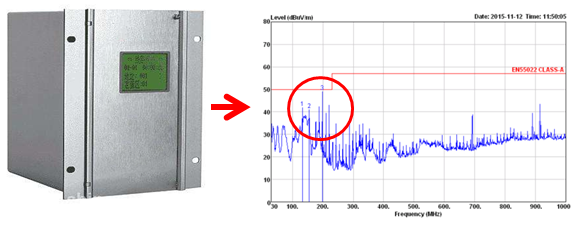
Spikes: based on system frequency, starting from system filtering
Case 2: excess appears during the test of radiation, and the radiation oscillogram is shown in the figure. It can be seen from the figure that this is a typical exceeding standard problem caused by the system frequency. The same judgment method is used to analyze cables, structures, and single boards. During the test, except for the power line, there is no external signal line. Before the test, the spectrum analysis was used to detect and it was found that the LCD screen was relatively noisy. Therefore, during the on-site rectification, the LCD FPC was removed, and the test results were very good. Therefore, it can be determined that the noise is radiated from the LCD FPC, which requires processing of the crystal oscillator, the clock signal, and the transmission line.

Crystal oscillator power supply, output, clock signal, and signal line need to be processed
In the field processing, the signal line with the clock signal was filtered, which produced a significant improvement effect. And then the cable was shielded and connected to the signal ground, which could fully meet the requirements. Through rectification, it turned out that the clock signal should be handled well, and internal transmission lines such as crystal filter, clock filter, and layout wiring can all become good antennas.
Case 3: inappropriate filter layout
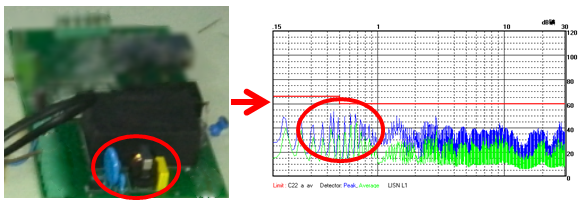 Typical filter circuit: X capacitance is set to be close to the power input port and behind the common mode
Typical filter circuit: X capacitance is set to be close to the power input port and behind the common mode
Case 3: this product needs to meet the CLASS B requirements. Seen from the above figure, it could only meet the CLASS A requirements, and the B-level low frequency band requirements are not met. It is judged from experience that the differential mode noise is the main cause, but from the filter circuit design, it has X capacitors and common mode inductances. So why does it cause problems in this frequency band? The reason is that the location of the filter element also affects conduction.
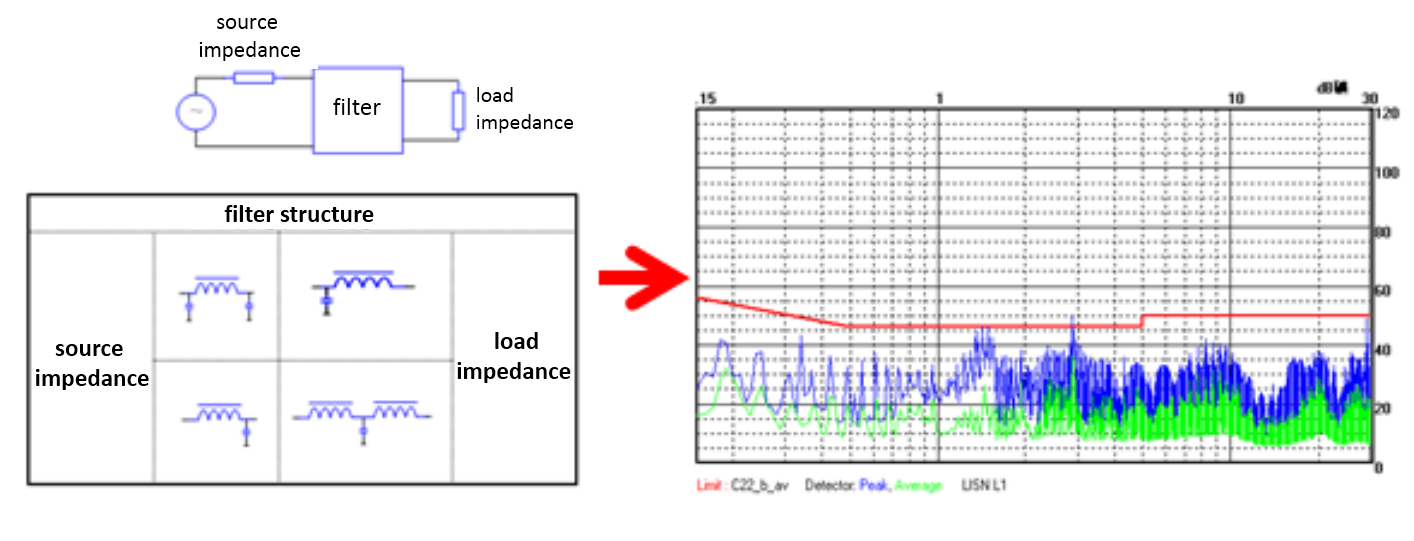
Filter circuit should conform the principle of maximum mismatch so that high impedance and low impedance are arranged in a pair
The design of the filter circuit has two important parameters, the source impedance and the load impedance, and the filter structure design generally follows the principle of high and low impedance configuration, such as LC. We know that when the LISN of the conduction machine is connected to the EUT input port, a 50uH inductor is close to the EUT port. According to the matching principle, a low impedance device, such as a capacitor, should be connected next. Therefore, moving the X capacitor before and after the common mode inductor fully meets the requirements. The experience drawn from this case is that in the design or rectification of the filter, the filter structure can be adjusted appropriately, and the principle of maximum mismatch of the EMI filter should be followed.
Case 4: conduction problem of power output connected to PE
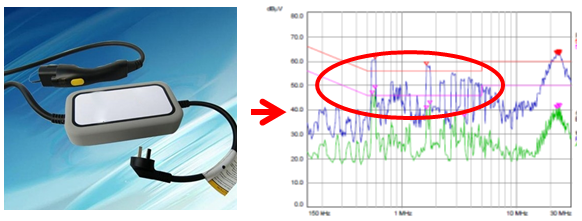
Output grounding will generally cause conduction, surge, and EFT to deteriorate
Case 4: many systems are now designed to directly connect the output ground or signal ground of the power supply to the metal casing (PE) or indirectly through RC based on safety regulations, product function realization or EMC performance requirements. This design method, often has the problem of exceeding the standard of conduction interference test. When the power output ground or signal ground is not connected, the test can be passed. This case is a typical failure of the conduction interference test caused by a power output ground connection to PE.

Regarding the output grounding, both input and output filtering should be taken into consideration. At the same time, it is necessary to consider enhancing power supply filtering and increasing output filtering.
Then why would the output ground connection to PE cause the conduction disturbance to deteriorate? There are two main reasons:
Generally, switching power supplies are only set the rectifier filtering at the output end, and some special EMC filtering wouldn’t be set;
A direct common mode path is formed after the output is grounded. If it is not grounded, the common mode path can only be formed by the distributed ground capacitance.
In view of the output grounding, not only the input end filtering must be done well in the design, but also the output end filtering must be dealt with well. In this case, the improvement was not obvious when the input filtering was done, but the output filtering was improved obviously, which has been verified in many customer applications.
Therefore, in the case of output grounding, both input and output filtering must be considered, and at the same time, it is necessary to enhance the power filtering and increase the output filtering.






